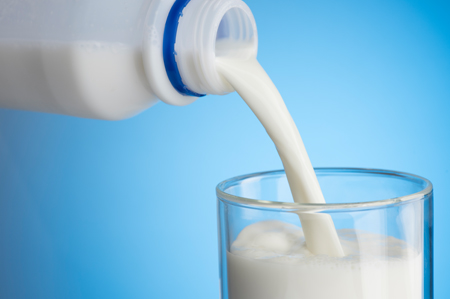USDA Cuts Milk Production Forecast, Price Outlook
Category: Dairy
 (Wallace’s Farmer) – In its monthly supply-demand estimates, the USDA reduced its 2018 milk production estimate and dairy product and milk price forecasts for the year.
(Wallace’s Farmer) – In its monthly supply-demand estimates, the USDA reduced its 2018 milk production estimate and dairy product and milk price forecasts for the year.
According to USDA, 2017 milk production reached a record 215.5 billion pounds, up 3.1 billion pounds from 2016’s record output. However, the estimate is 200 million pounds lower than December’s projection.
USDA also reduced the 2018 milk production estimate by 500 million pounds due to slower anticipated growth in the dairy cow herd combined with continued slow growth in milk per cow.
Not a strong start
According to Bob Cropp, University of Wisconsin Extension dairy economist, milk prices started to decline last December and will continue to fall through the first quarter of this year.
“Class III reached its peak last year in November at $16.88 but fell to $15.44 in December, and it looks like January will be down to $13.90,” Cropp says. “While still not great, milk prices in 2017 were the highest since 2014 and averaged well above 2016. Class III averaged $16.17 compared to $14.87 in 2016.”
While Cropp believes farmers need strong milk prices, he says 2018 prices will likely look more like 2016 than 2017.
The lower milk prices are being driven by relatively high milk production, a decline in beverage milk sales, slower growth in butter and cheese sales, and a decline in nonfat dry milk/skim milk powder exports all resulting in relatively high stocks levels. Adjusting for the 2016 leap year, 2017 milk production was up 1.7%.
“With milk production this strong, favorable milk prices require good domestic sales and increased dairy exports,” Cropp notes.
The latest dairy export data for November shows 2017 exports did improve over 2016, particularly through July. Nonfat dry milk/skim milk powder exports ran above year-ago levels starting in the last half of 2016 through July 2017. October NDM/SMP exports fell 34% below a year earlier but improved to just 1% lower in November. Butter, cheese and total whey exports have been higher than a year ago, with year-to-date exports up 13%, 22% and 8%, respectively. But with relatively strong milk production and slower domestic sales, stocks of dairy products are relatively high. In recent months, butter stocks have been below year-ago levels, but they grew by 6.2% from November to December and are now 1.8% higher.
The price of butter held well above $2 per pound during December and into January. But much lower cheese and dry whey prices lowered the Class III price. On the CME, 40-pound cheddar blocks averaged $1.73 per pound in October, $1.66 in November but just $1.49 in December, Cropp says. “Blocks have been as low as $1.475 in January, recovering to $1.57, only to fall back to $1.495. Barrels averaged $1.70 in October, $1.66 in November and $1.54 in December. But in January, barrels have been as low as $1.21, with recovery to $1.36.”
Dry whey, which was 51 cents per pound last April, has been on a steady decline since and has slipped to 25 cents per pound.
USDA has revised down its forecast for 2018 milk production to a 1.5% increase from 0.2% more milk cows and 1.3% more milk per cow, Cropp says.
“While this is a smaller increase in milk production than last year, it is still a lot of milk, requiring good domestic sales and dairy exports,” he adds. “There are good signs that butter and cheese sales could grow better in 2018 than last year. The economy is doing better, and both the consumer confidence index and restaurant performance indexs are favorable for good sales.”
Tough competition
But dairy exports will face increased competition for markets as world milk production is expected to increase. For 2016 through the first half of 2017, milk production was below year-ago levels in the major dairy exporters of the European Union, New Zealand, Australia and Argentina. But now milk production is running much higher. New Zealand is currently experiencing a major drought, which will dampen increases in its milk production the last half of the season. World demand is picking up, which will absorb some of the increase in world milk production. China, in particular, has stepped up its imports.
“So for 2018, we could see Class III prices in the $13s first quarter, the $14s second quarter, low $15s third quarter and the mid to high $15s fourth quarter, and averaging around $14.90 for the year.”
According to Cropp, the five leading dairy states — California, Wisconsin, Idaho, New York and Michigan — produce 51% of total milk production. In December, three had December production levels below a year ago: California was down 0.3%; Idaho, down 0.2%; and New York, down 2.2%. Two had higher production: Wisconsin up 1% and Michigan up 2.5%.
“The combined December production of these five states was just 0.1% higher than a year ago,” Cropp says.




